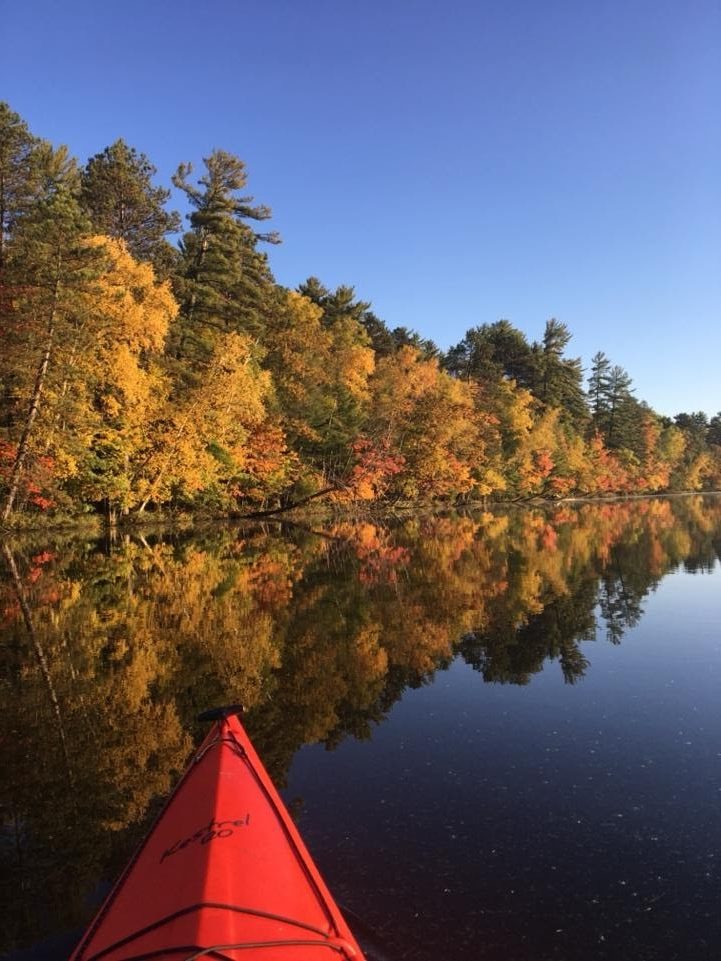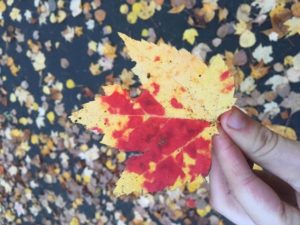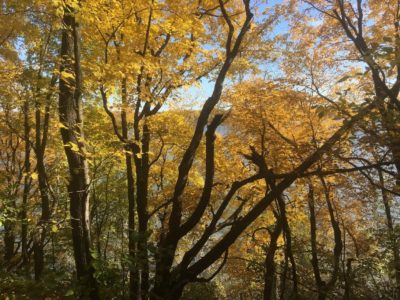By: Matthew Olson
October, 1st 2021
We’ve made it to October, the time of year when the landscape begins to rapidly change. Our gardens are winding down and the first frost will be here soon to end our growing season. However, before the cold weather arrives, we should spend time enjoying the display of color happening in our backyards and surrounding forests. The different shades of fall color are everywhere, from the vibrant orange of Sugar Maples to the golden hues of the Tamarack. Have you ever wondered why the leaves change color this time of year? Maybe you’ve wondered how and why plants go dormant this time of year. Today, we’ll look at the science behind fall color, and the process of how plants go dormant.
The color of leaves on a tree are determined by pigments in the leaves. The reason trees have green leaves is due to a pigment called chlorophyll. Chlorophyll is produced during late spring and summer, which allows sugar to be produced in the leaves in a process known as photosynthesis. However, chlorophyll isn’t the only pigment present in the leaves. The leaves of some trees contain carotenoids, which are a different type of pigment in the leaves. This pigment is present in the leaves throughout the summer but is masked by the chlorophyll. Carotenoids are primarily found in trees that display yellow or orange leaves during the Fall. A few common examples are Sugar Maples, Birch, and Beech trees.
As we progress from Summer into Fall, the chlorophyll begins to deteriorate in the leaves. This is due to the shorter days and longer nights. When the nights become long enough, a layer of cells called the abscission layer reduces the flow of nutrients and water to the leaves. As a result, the chlorophyll breaks down and the leaves fall off the tree. The abscission layer is located where the leaf and branch connect. As the chlorophyll breaks down, the carotenoids become visible, which provide us with a gorgeous display of orange and yellow foliage.
The other pigment that is present in the leaves of many trees are anthocyanins. Unlike carotenoids, anthocyanins are only produced in the Fall. During the Summer, chlorophyll is producing sugar in the leaves and sending it to the rest of the tree for energy. Anthocyanins are created when the abscission layer traps the leftover sugar in the leaves. This pigment creates hues of red and purple in the leaves. These are usually visible on Oak, Sumac, and some Maple trees.
During the summer, you may notice the occasional yellow or red leaf on a tree or shrub. This is usually a result of stress. Trees that are stressed will often lose chlorophyll, allowing the other pigments to become visible in the leaves. During the Fall, you may notice that some leaves have several colors on the same leaf. This shows all the different pigments interacting with each other.
Fall color is never the same each year. Some years feature more vibrant displays than other years. Environmental conditions, such as weather are a major factor in the development of fall color. An ideal year for good fall color will feature consistent moisture during spring and summer, along with drier conditions in late summer and early Fall. During the Fall, the days should be sunny and warm, with cool nights. A summer that features a drought will usually result in trees that drop leaves early due to stress. The drought conditions we’re having this year are causing many leaves to drop prematurely.
The reason why trees and shrubs go through this process every Fall is to prepare for winter dormancy. Winter dormancy refers to the time of year when plants stop growing and start to conserve their energy. During the growing season, the source of their energy is in the leaves, where photosynthesis takes place. As the days become shorter and cooler, trees and shrubs reduce the amount of energy they’re creating and begin to conserve it by moving the proteins and carbohydrates from the leaves to the bark, buds and trunk. Herbaceous Perennials, such as Peonies and Daylilies, will move carbohydrates from the leaves into the roots to be stored during the winter.
Plants begin to prepare for dormancy when they sense the day-length becoming shorter (usually in August). Cooler temperatures are the next indication of winter coming. The cells of woody plants contain proteins and fats that function during summer and are converted to a different form for winter, allowing trees and shrubs to survive fluctuating temperatures during winter. The final indication of winter is the arrival of freezing temperatures. By this time, plants are losing their leaves and entering dormancy (mid-October to early-November). As the winter progresses, trees and shrubs will gradually acclimate to colder temperatures. By January, woody plants are fully acclimated and able to withstand the coldest periods of winter. In February, they will gradually begin to lose winter acclamation as they prepare for spring.
Plants can track how long they’ve been experiencing cold weather. This allows them to stay dormant even if the weather is favorable for growth. Most plants in Minnesota have a chilling requirement, which means they won’t come out of dormancy unless a cold period of weather (between 32°-45°) has been present for a certain length of time. For example, if you take a cutting from a shrub in early Winter and plant it in a warm greenhouse, it will not grow. This is because the chilling requirements have not been met for the shrub. If you take a cutting from a shrub in February and plant it in a greenhouse, it will grow, because the chilling requirements have been met. A warm stretch of weather in late Winter will often cause some trees and shrubs to break dormancy, which can cause severe damage when cold weather returns. This happens because the tender new growth is not acclimated to freezing temperatures. In a normal year, the plants will stay dormant until spring has arrived.
The process of how plants prepare for winter is fascinating, and I hope this information will help you appreciate the amazing beauty that is in our landscapes and natural areas. Happy Gardening!



